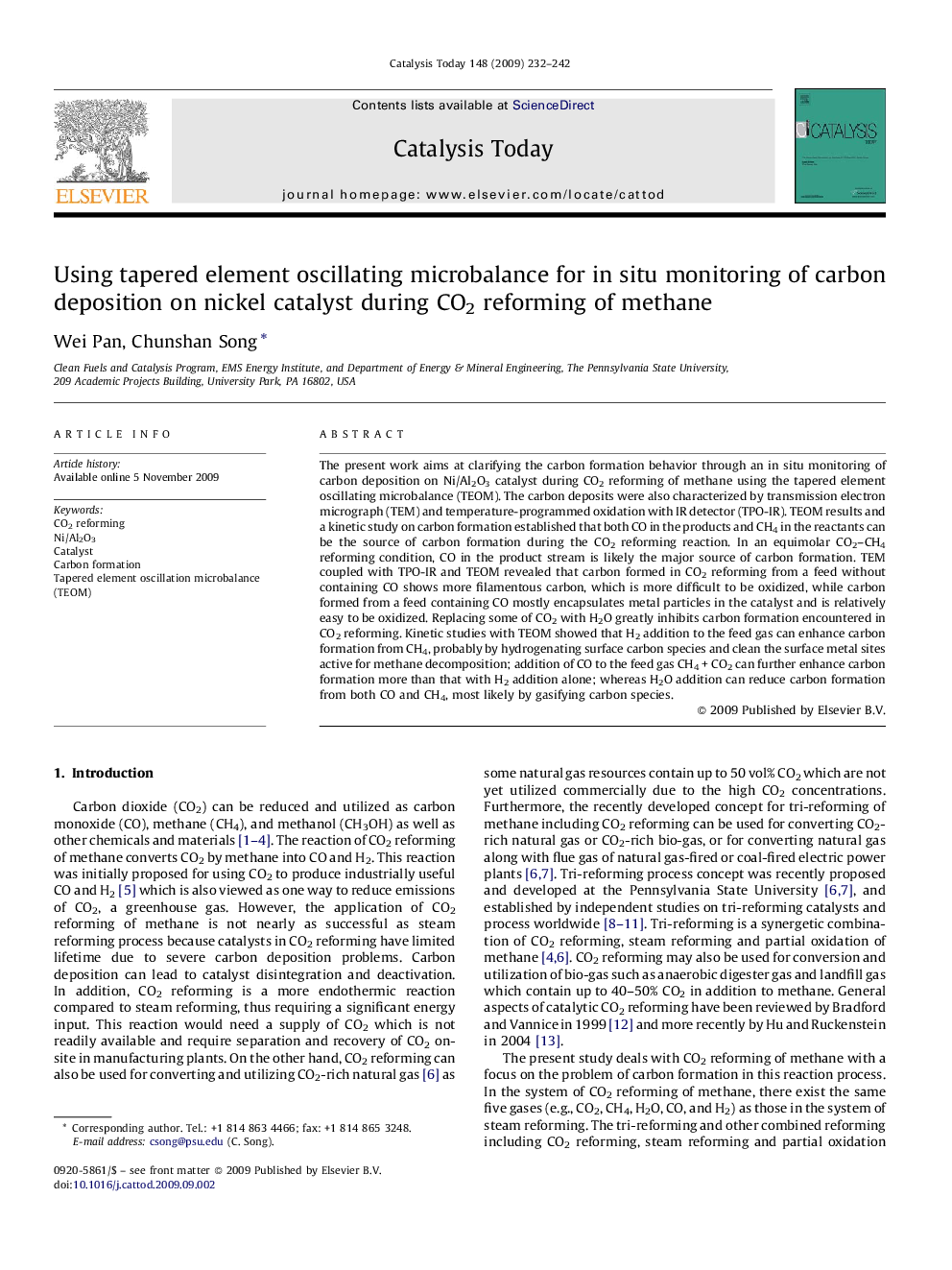| Article ID | Journal | Published Year | Pages | File Type |
|---|---|---|---|---|
| 56693 | Catalysis Today | 2009 | 11 Pages |
The present work aims at clarifying the carbon formation behavior through an in situ monitoring of carbon deposition on Ni/Al2O3 catalyst during CO2 reforming of methane using the tapered element oscillating microbalance (TEOM). The carbon deposits were also characterized by transmission electron micrograph (TEM) and temperature-programmed oxidation with IR detector (TPO-IR). TEOM results and a kinetic study on carbon formation established that both CO in the products and CH4 in the reactants can be the source of carbon formation during the CO2 reforming reaction. In an equimolar CO2–CH4 reforming condition, CO in the product stream is likely the major source of carbon formation. TEM coupled with TPO-IR and TEOM revealed that carbon formed in CO2 reforming from a feed without containing CO shows more filamentous carbon, which is more difficult to be oxidized, while carbon formed from a feed containing CO mostly encapsulates metal particles in the catalyst and is relatively easy to be oxidized. Replacing some of CO2 with H2O greatly inhibits carbon formation encountered in CO2 reforming. Kinetic studies with TEOM showed that H2 addition to the feed gas can enhance carbon formation from CH4, probably by hydrogenating surface carbon species and clean the surface metal sites active for methane decomposition; addition of CO to the feed gas CH4 + CO2 can further enhance carbon formation more than that with H2 addition alone; whereas H2O addition can reduce carbon formation from both CO and CH4, most likely by gasifying carbon species.
